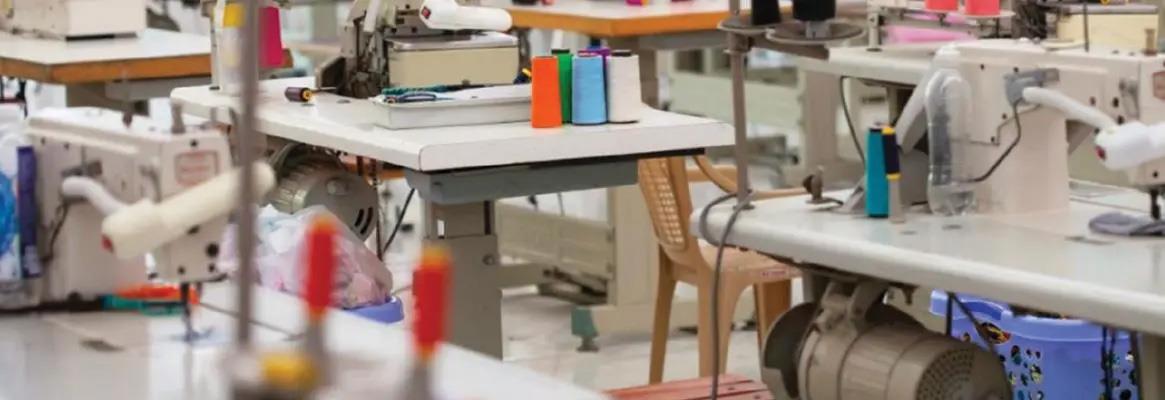Zero waste is what designers and manufacturers should aim to achieve. Here are some waste reduction and management techniques in the garment manufacturing industry.
The need of the hour today is for all designers and manufacturers to adopt a zero waste policy and save the planet from textile pollution. During the apparel production process in factories, a lot of textile waste is generated at various stages like cutting, sewing etc. The term 'zero waste' has emerged as the new saviour for addressing textile pollution, the second major contributor to global waste. From the design process to production and end use, the generated waste-approximately two-thirds of the textiles produced-ends up in landfills. Understanding these processes will help eliminate the waste generating activities in the design stage itself that would save a significant percentage of textiles from ending up as unusable waste. Zero waste techniques for producing apparel can be found in traditional garments. To date, saree is the best example of a zero-waste garment that is adorned by a vivid use of yarns, accessories, prints, and even by different forms of draping. Similarly, kimono is prepared by rectangular pattern pieces sewn together, which doesn't leave any remnants of fabric. Chitons, togas, kalasiris with shawls, shenyi, hanbok, are excellent examples of efficient use of fabric to the fullest.
But now when fast fashion rules the closets of people, some designers felt the need for zero waste and picked up this sustainable concept to produce successful collections that earned fame across the world. Charlotte Bialas, a French designer, used geometrical-pattern cutting to reduce cutting waste. She used the waste produced in designing of accessories or sashes. After gaining a doctorate in non-Euclidian fashion pattern making, Dr Mark Liu became the Sustainable Fashion movement's pioneer through his unique jigsaw manufacturing procedure. Daniel Silverstein's unique patchwork from unusable fabric pieces, Yeohlee Teng's 2017 fall collection showcasing fit for purposes, Tarah St. James' no-waste multipurpose design collections are a few more.
During large-scale apparel production, maximum textile waste is generated during the cutting process. This solely depends on marker planning and marker efficiency to use every bit of the fabric used. Although many designers have tried to control it through subtraction cutting, geometric cutting, jigsaw cutting, incision cutting, and other techniques, most large-scale factories usually ignore this issue to meet the production deadline and plan fabric cutting with an additional allowance of 3 per cent fabric consumption for wastage. This 3 per cent when equated to millions of garments produced amount to a high quantity of waste. As long as this allowance is ignored, it will keep contributing to waste generation. At the factory level, proper scrutiny of fabric consumption and strict maintenance of untampered records of end bits and pieces would force them to work on an 'alert-mode' towards waste generation.
Furthermore, high-end designing software can be used for drafting patterns and technologically advanced cutting machines for high accuracy and precision. During the sewing process, waste is usually generated by overlock machines and edge-cutting machines that cannot be used even for patchwork. Although avoiding such procedures and finding an alternative would be the primary solution, coming up with ways to use such waste like stuffing pillows, mattresses or toys can be a better use than dumping those into landfills.
For post-consumer waste, many companies have come up with creative and innovative solutions. US clothing brand Patagonia is one of the top players in fashion sustainability through its 'Worn Wear' campaign, launching repair services and guides to encourage people to use their products longer. US-based Looptworks has come up with ways to recycle unusual materials from leather jackets, airplane seat covers, wetsuits, belts, etc to create laptop sleeves, wallets, clutches, and other products. Preloved, M Missoni, Germanier, Calla, Beyond Retro, Fanfare, RubyMoon, Re/Done, Urban Renewal are some of the brands into recycling and upcycling fashion products.
To implement zero waste, a designer should aim for a perfect fit of garment panels and aim to increase the garment's longevity so that wearers can use it for a long time. Using sustainable materials that aid graceful ageing of the piece of apparel helps; for example, garments that look fresh on purchase but adapt a vintage look after being used for long can add to its appeal. There should also be a focus on avoiding elements like flashy accessories, unnecessary seams and features that may add to the garment's wear and tear. Several techniques can be experimented with for adding dimension to the fabric. Origami technique is also a unique way that encourages the folding of fabric instead of cutting. The designer should have a proper understanding of the reusability and recyclability of all the elements that are used in making the garment and also clarity regarding the production process to avoid all possible stages that add to waste. The better is the planning and execution at the design stage, the lesser would be the waste generation at stages to follow.
Zero waste can be considered as a benchmark that designers and manufacturers should aim to achieve. Although cent per cent achievement is far from the road, even a small initiative towards it would have a positive effect on the cause.
References:
1. Gwilt.A (2014); A Practical Guide to SustainableFashion; Fairchild Books
2. Rissanen, T. (2013). Zero Waste Fashion Design: A Study at the Intersection of Cloth, Fashion Design, and Pattern Cutting. Sydney: University of Technology
3. BtheChange. (2016, March 25). How Ethical Clothing Brands Are Finding Ways to Reduce Waste. Retrieved from BtheChange: https://bthechange.com/how-ethical-clothing-brands-are-finding-ways-to-reduce-waste-ed28d5c5707d
4. Compare Ethics. (2020). Recycled and Upcycled Clothing Brands To Know in 2020. Retrieved from Compare Ethics: https://compareethics.com/9-recycled-and-upcycled-clothing-brands-you-shouldnt-pass-in-2018/
5. Gabardi, C. S. (2019, August 23). 7 Zero Waste Designers who are just Killing it. Retrieved from Eluxe Magazine: https://eluxemagazine.com/fashion/zero-waste-designers/
6. Parker, O. P. (2020, April 22). Meet the Brands Giving Old Fabrics New Life Through Upcycling. Retrieved from Fashion Magazine: https://fashionmagazine.com/style/upcycling-fashion-brands/
7. (2017). Pulse of the Fashion Industry. Global Fashion Agenda & The Boston Consulting Group.
8. Sweeny, G. (2015, August 13). It's the Second Dirtiest Thing in the World - And You're Wearing It. Retrieved from AlterNet: https://www.alternet.org/2015/08/its-second-dirtiest-thing-world-and-youre-wearing-it/










Comments